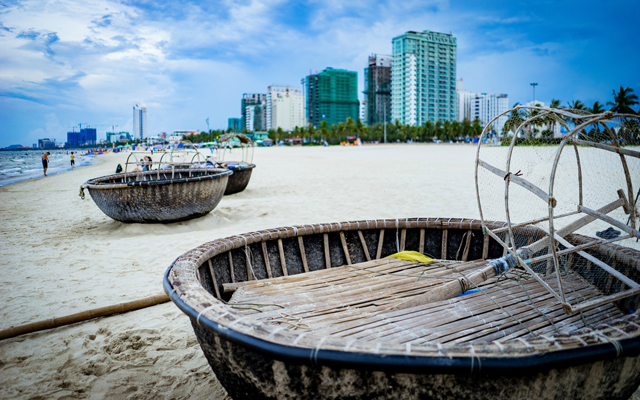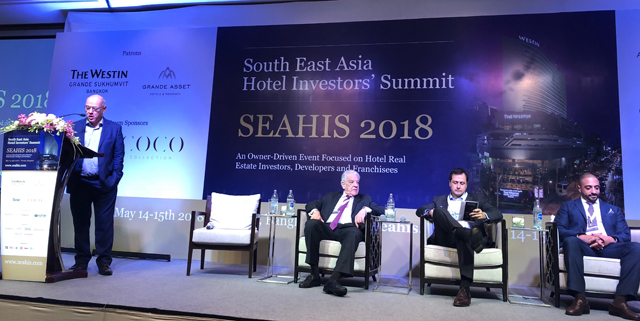
While hotel investors do not believe that the bubble will burst for Vietnam despite an imminent 43 per cent increase in the number of room keys – a whopping 35,000 additional keys, according to STR – they do believe its popular tourist areas will be ruined unless proper planning and development is implemented.
“Phu Quoc is a Boracay in the making,” declared Kenneth Atkinson, executive chairman, Grant Thornton Vietnam, “because there is no solid waste management at all. You’ve got 17,500 hotel rooms in three- to five-star categories (based on completed projects, approved ones and those under construction) – that’s more than Sydney has. You have an airport with a capacity for 2.5 million people a year. There are 100,000 inhabitants on the island and you’re going to need at least 25,000-30,000 people to work in hotels alone. So (there are) serious labour shortage and infrastructure problems, particularly waste management, which is becoming a serious issue on the island.”

Atkinson was on a panel at the just-concluded South-east Asia Hotel Investors’ Summit in Bangkok, where moderator David Keen, CEO of Quo Global, raised his worries about Vietnam’s “crazy” growth and found Halong Bay, which he had visited several times in the last few months “hideous, frankly”.
“If we look at Phu Quoc, Ho Tram, Danang, Hoi An, there is little planning ahead. What’s going to happen to these gorgeous destinations?” Keen asked.
In Danang, real estate developers are competing to build taller and larger skyscrapers. The local media reported that in the near future, the tallest building in the central region would be in the city. Developed by PPC An Thinh Da Nang, the complex will cover an area of 2.2ha and include four 50-57-storey towers.
In Hoi An, a UNESCO World Heritage Site just 60km2 in size, Atkinson who visited six months ago found the number of visitors and tourist buses “horrifying”.
Michael Piro, COO of Indochina Capital, who is “bullish” on Vietnam with the launch of a new select service, millennials-focused brand targeting the domestic market, Wink Hotels, admitted to his “fair share of concerns about the lack of vision in the development of these areas”.
He said: “Vietnam is very blessed from a geographical perspective. It’s a shame to see it get washed up in development, excitement and greed.
“The big risk we carry is the areas become too rundown, with not enough care to maintain what people come to see. We really need to band together to ensure that the government hear from us, and now we have the Boracay (cleanup) as an example.”
Gonzalo Meceda, vice president development of Melia Hotels International, said he and his company were also worried about a “lack of planning” in the country. “I don’t think Danang is a place where it makes sense to build a 50-60-storey buildings. Hoi An is next to it, so that’s the next one. Phu Quoc – there is still time to save it; the government should focus on that,” he said.

How it got this way
The panel spotlighted key reasons how Vietnam got this way, including arrivals demographics that comprised big-volume markets China and South Korea and, ironically, a private sector that had taken on the mantle of marketing Vietnam aggressively and even got involved in making it more accessible to visitors in order to fill its rooms.
The figures speak for themselves.
It took Vietnam only eight years to get to 13 million arrivals (2017 over 2016), compared to Thailand, which took 25 years to get from six million to 15 million, Atkinson pointed out. But, more than half of the 13 million were group travel, with the top four Asian markets comprising by far China, followed by South Korea, Japan and Taiwan.
Even if the government had increased the marketing budget from US$1 million to US$5 million, as Atkinson asserted, this paled in comparison to Thailand’s US$100 million or Malaysia’s US$80 million marketing spend. This saw the private sector stepping in to be the destination marketeer, and continuing to, in order to protect its own investments.
Indochina Capital, for instance, privately underwrote the first charter flight on Dragonair from Hong Kong to Danang, where it was building furiously. “There were a lot of naysayers,” recalled Piro. “Now, it’s one of the busiest flights; you can’t get a seat on Hong Kong-Danang direct flights. That was something we had to and happy to do, which not only yielded serious results for us as asset owners but also for Danang and Vietnam.”
Melia’s Macedo also said that in Phu Quoc, the private sector had done all the marketing last year. “But the Vietnam government has to be clear what it wants for the country. We can help, but we have been making the decisions ourselves. It shouldn’t be like that,” he said.
The government hasn’t been able to keep up with the tourist arrivals uptrend. Atkinson said: “Vietnam is not good at planning ahead. We’ve been talking for 10 years now about the new international airport in Ho Chi Minh City and at last they are clearing the land, which is going to take another two years. We’re probably eight to 10 years away in getting a new airport in Ho Chi Minh City…so how do you increase the number of tourists coming into Ho Chi Minh City?”
In spite of the ‘craziness’, investors evidently are still crazy about Vietnam. At present, RevPAR is still up 12 per cent in the first quarter. They look to a domestic market size of 70-80 million people and a growing upper middle class that is upwardly mobile and travelling more; a relaxation in visas; and the highest level of government spending on infrastructure in South-east Asia (5.3 per cent of total GDP).
As well, they are heartened by the government’s intention to shift the arrivals demographics. Said Atkinson: “Vietnam wants to get the average spend up to US$1,080 by 2020. About 30 per cent of the inbound market is Chinese low-cost or zero-cost, and that does not help. But more and more, we’re seeing more travellers from high-spending countries like Europe, particularly now that Vietnam Airlines has direct flights to Paris, Frankfurt and London and is starting US flights later this year. We’ve got to change the demographics a bit; we’ve seen how (the China and Vietnam South China Sea disputes) saw Chinese tourists fell off overnight to zero.”
Piro also looks beyond the frontline data. He said: “What’s the actual reality? Of the 43 per cent increase in room keys, how much is actually going to be realised? Having over a decade of experience in Vietnam, my estimate is half probably. If you look at what the actual increase in supply is going to be, and the real increase in demand (from both domestic and international), I don’t see a big issue.”



















